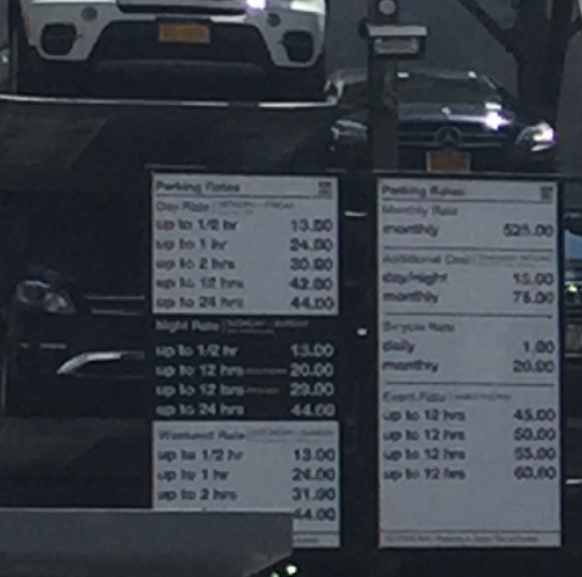Background
I was thinking about joining Uber as a Uber driver. But I read that Uber does not pay enough to its driver. So I have to figure out cost of operating my car. I do have good records. Here are some facts from my records:
- The 2004 model year Toyota Sienna LE costed $27,048 when purchased
- Retail price of the car is around $3,000 at its current state
- The car average 18 mile/gallon
- Current average fuel cost is $2.40/gal
- Yearly insurance cost is $1,414
- Yearly repair cost is $900 (with a lot work performed by myself)
- Yearly other service cost is $1,000 ( tax, tag, emission test, tires, ….)
- Total distance drove: 177,000
- Yearly distance drove: 11,000 miles
Cost Calculations:
Depreciation cost:
The depreciation cost is the price drop of the car. Depreciation is the biggest when the car is new. It is said that car price drops 20% when it left the dealer’s lot – it changes from new car to used car. I used straight line depreciation in last 17 years, which is lower than most other calculation.
Total depreciation is: $27,048 – $3,000 = $24,048
It translated to: $1,415/year ($24,048/17 year = $1,415/year)
Or $0.14/mile ($24,048/177,000 = $0.14/mile)
Fuel cost:
Fuel cost is very visible: $2.40/18 = $0.13 / mile
Insurance cost:
We need to translate insurance cost from yearly cost to cost per mile:
$1,414/11,000 = $0.13/mile
Repair and other service cost:
This also should be translated from yearly cost to cost per mile:
($900 + $1,000) / 11,000 = $0.17 / mile
Total yearly operating cost:
- Depreciation: $1,415
- Insurance: $1,414
- Repair and other service: $1,900
- Fuel cost: $0.13 x 11,000 = $1,430
- Total yearly cost: $6,159
Total operating cost per mile:
$6,159 / 11,000 = $0.56 / mile
Conclusion:
Cost comparison to other calculations:
My calculation is very close to IRS standard Mileage rate of $0.58/mile. The difference of 4% can be from my lower fuel cost (location difference) and lower repair cost (lots of self maintenance)
My calculation is lower than AAA Reveals True Cost of Vehicle Ownership, which was $6,354 for a small sedan, $8,151 for medium sedan and $9,146 for a minivan. The difference is mainly in depreciation (long time ownership) and fuel cost. Base on AAA’s calculation, it costs $0.83/mile to operate a minivan.
Should one own a car in New York city or other dense metro areas?
With the rise of ride share such as Uber and Lyft, car ownership can be optional if there is decent public transportation. New York city has good public subway system with single trip cost at $3.00 (before discount). With 260 work days, subway cost is: $1,560 ($3.00 x 2 x 260). Commuting in subway costs much less than owning a car. With $6,159 annual cost of operating a car, there is $4,599 remaining for ride share and car rental. It is advantage for most people not to own a car in New York city, not to mention of circling around in the city to find a parking space and $44/12hour parking fee in Manhattan.

Can I make money becoming a Uber driver?
Base case:
According to research, a top rate New York city Uber driver makes $1.00 /mile and $0.50/minute. So a 10 miles trip is $20.00 assuming twenty minutes actual ride time (average speed 30 mile/hour, MPH). The cost of the ride is $5.60 ($0.56/mile x 10 mile). So the net income is $14.40 in 20 minutes, which is excellent on the surface.
However, we need to include the cost and time to pick up the rider and coming back to driver home base. Ten minutes to pick up the customer is acceptable in New York city, that is 5 miles away using 30 MPH speed. Returning to home base will be 15 miles (10 + 5) and it is another 30 minutes.
So the total distance from the driver’s perspective is: 5 (to pick up) + 10 (actual customer ride) + 10 (back to pick up point) + 5 (back to home base) = 30 miles.
Total cost of the 30 miles drive is: $0.56 x 30 = $16.80
Net income for the ride is: $20.00 – $16.80 = $3.20
Total time for the ride is: 10 (to pick up) + 20 (actual customer ride) + 20 (back to pick up point) + 10 (back to home base) = 60 minutes
Average hourly income is: $3.20/hour.
So if there is no return customer, the ride is not very profitable for the driver.
Normal Case:
If the driver pick up another paying customer for the return trip, total income is $40.00. Net income is $23.20. The average hourly income is $23.20. In that case, Uber driver makes more than $15/hour minimum.
Best Case:
The best case scenario, Uber driver just drops off former customer and pick up new customer and picks up a customer on the return trip.
Total cost is: $0.56 x 20 = $11.20
Net income is: $40.00 – $11.20 = $28.80
Total time is: 40 minutes = 0.667 hour
Hourly earning rate: $28.80 / 0.667 = $43.18/hour
Which is a very good hour income.
Final Thought
From this analysis, we can see that drivers in big cities that have a lot of ride share demand would like to drive for ride share companies because there are potential to make decent money. If a driver can make $43.18/hour for 240 hours (10 hours/day x 6 day/week x 4 week/month), the driver can net $10,363/month. But on the other hand, if the driver is not lucky, which drives the hourly rate to $3.20/hour, the driver’s monthly net income is $768/month. In that case, other money making opportunities are better.